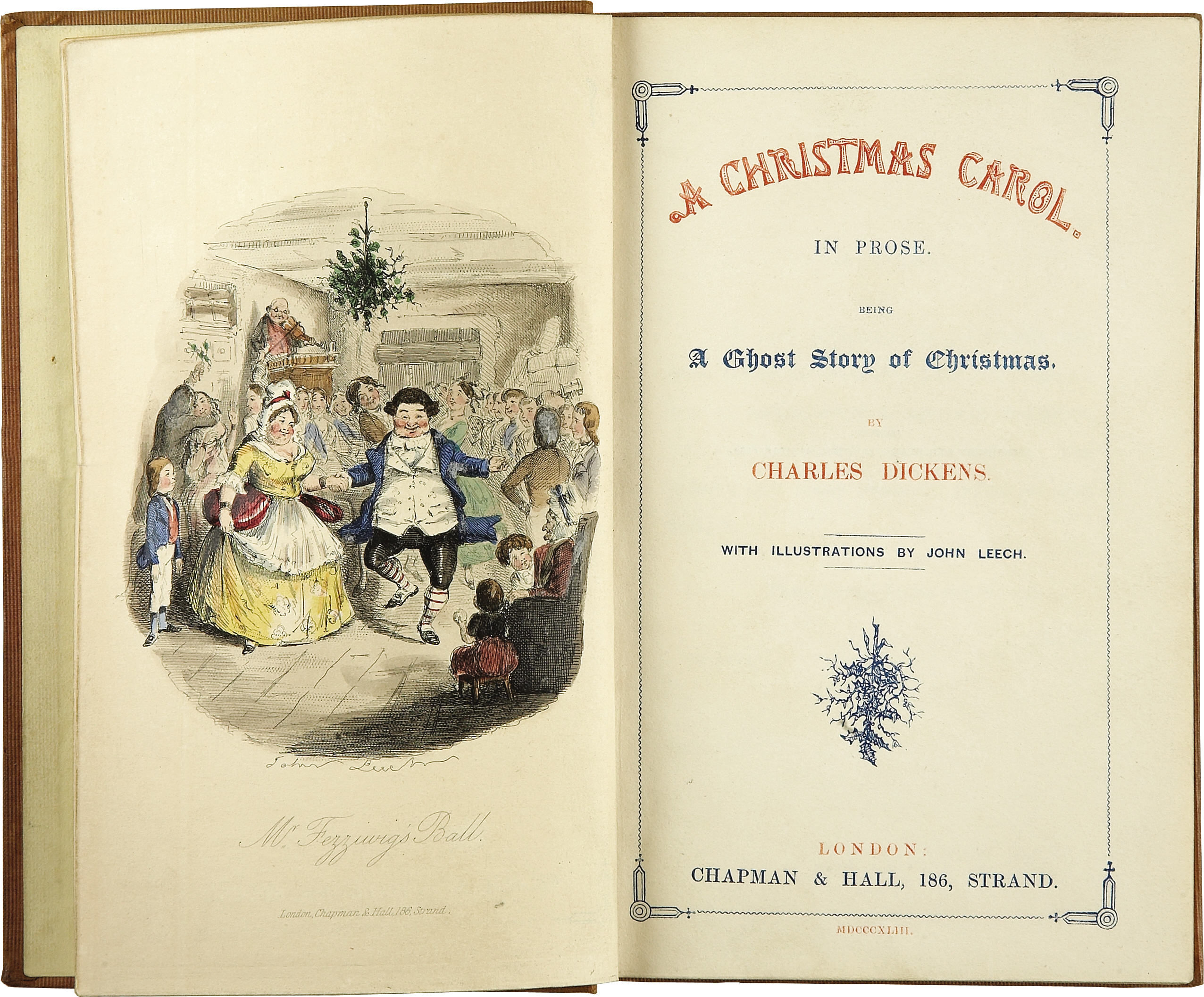When Charles Dickens published his career-changing work in December 1843, Christmas was not the major holiday we think of today. In fact at that time it ranked somewhere beneath Easter in importance on the Christian calendar. But a few things happened during the 19th century that would propel the holiday to near preeminence.
Dutch settlers of New York considered St. Nicholas their
patron saint, and celebrated his day, December 6th, accordingly. On
St. Nicholas Eve, they hung stockings with the hope St. Nicholas would visit
and leave them presents. In 1809,
Washington Irving (1783-1859) published his satirical History of New York under the nom
de plume of Diedrich Knickerbocker. In it he fancied that St. Nicholas had
a wagon he could ride over trees and rooftops. By 1821 the Dutch word for St.
Nicholas, “Sinterklaas,” had been Anglicized into Santeclaus, thanks to an
anonymously published poem by William Gilley of New York. The stage was set.
In 1823, and essentially by accident, a poem by Clement
Clarke Moore (1799-1863) was published that would become one of the best-loved
English language poems, “A Visit from St. Nicholas,” or as most of us know it,
“The Night Before Christmas.”
And it was Moore that transplanted Santa’s visit and famous accompanying
nocturnal events to Christmas Eve, inventing along the way each of Santa’s
eight reindeer. By the time Dickens published his famous story, the poem was
published regularly by newspapers across the country every Christmas Eve.
But well before Thomas Nast drew a lasting image of Santa
Claus for the January 3, 1863 issue of Harper’s Weekly, Dickens smartly
encapsulated the Christmas spirit in a novella that was equal parts parable,
social criticism, and ghost story.
Published on December 19, 1843, the first edition of 6000
copies sold out that day. A further six editions comprising 7000 more copies
would be executed by the end of January 1844.
Dickens had begun composition in October of 1843, under
severe financial strain. A disagreement with his publisher led to him financing
the edition himself, and he ordered expensive binding, gilt edging, and four
hand-tinted illustrations by John Leech, all while insisting the price be kept
at 5 shillings, so as to allow just about anyone to afford it.
Variants among the first and second editions are most
numerous, with the earliest state of the first edition having green endpapers
and uncorrected errors in the text and table of contents. Scholars have long debated
various aspects of the editions and states, among them Richard Gimbel, Philo
Calhoun, Howell J. Heaney, and William B. Todd. The debate goes as far as using
measurements of the title and borders on the cloth front board to define an
edition and state.
Scholarly consensus regarding the anatomy and qualities of
the earliest editions may never come, but the timelessness of the story remains
beyond doubt!
Did you find this post interesting? Click the dates and months on the Blog Archive side bar to the right for more! Thanks for reading!
Did you find this post interesting? Click the dates and months on the Blog Archive side bar to the right for more! Thanks for reading!


